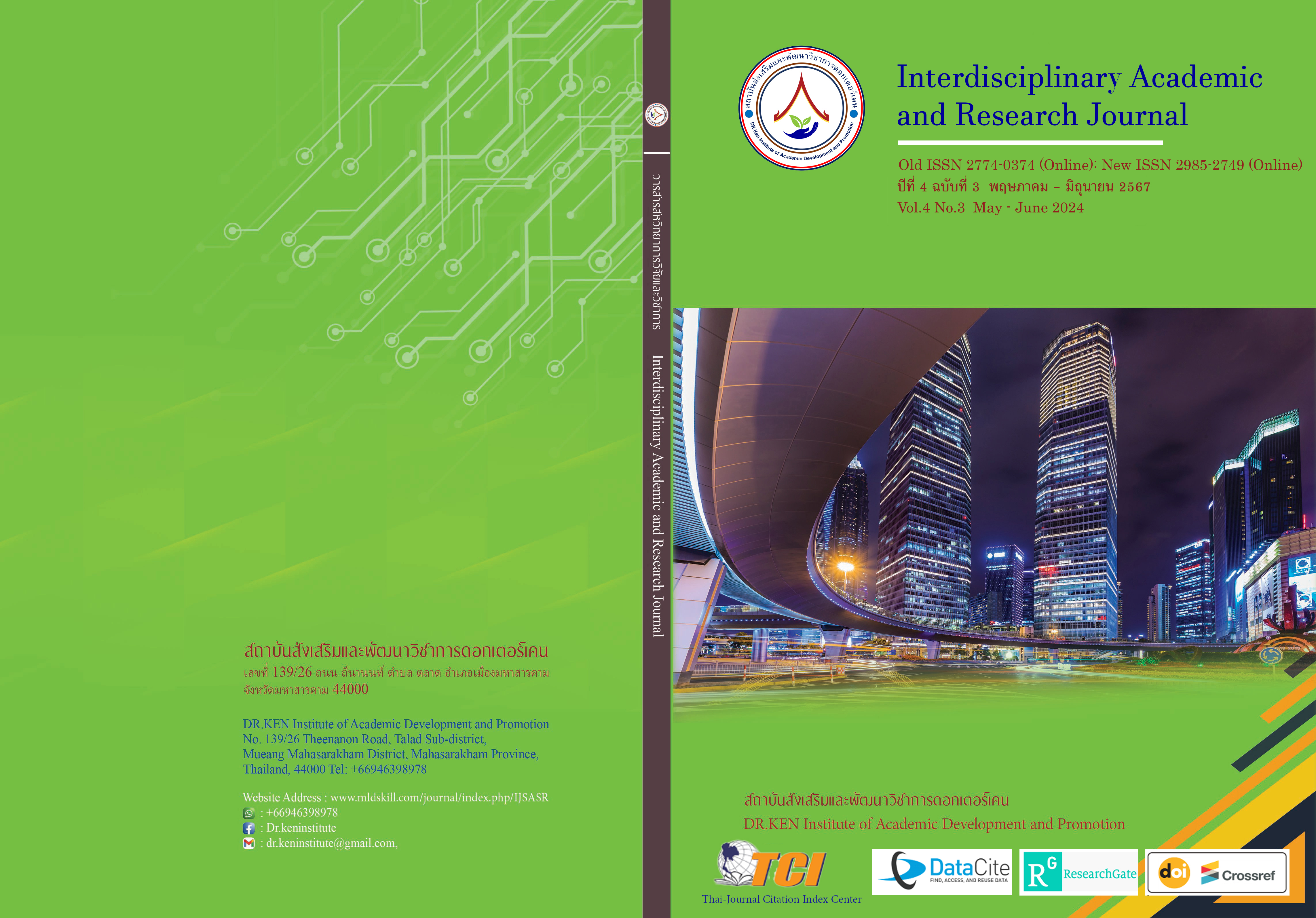Aidelaisi Silk Designing Based Luopu Tourism Souvenir Marking
DOI:
https://doi.org/10.60027/iarj.2024.275341Keywords:
Aidelaisi Silk; , Tourism Souvenir; , MarketingAbstract
Background and Aims: In the international context of the combined development of intangible cultural heritage and tourism, the study mainly focuses on the marketing of Aidelaisi silk tourist souvenirs. Aidelaisi silk technique, an intangible cultural heritage technique of the Chinese Hui nationality, is a traditional textile binding and dyeing technique on the ancient Silk Road. Thus, the objectives of the research are to strengthen and improve the knowledge of Aidelaisi silk; to effectively market and promote traditional Uyghur Aidelaisi silk production techniques; to design tourist guides and Aidelaisi silk tourist souvenirs that are consistent with and reflect the unique tourist identity of Luopu. In this way, the protection and innovative development of traditional Aidelaisi silk skills can be promoted sustainably.
Methodology: This research adopts qualitative, field surveys and interviews, and other descriptive and interpretive research methods. The theoretical basis of this research includes the International Centre for the Study of the Preservation and Restoration of Cultural Properties (ICCROM), Australia’s Prague Charter 1999, and Heritage Quality, among others.
Results: The promotion of Luopu Aidelaisi Silk's heritage gains momentum through strategic initiatives like expanding marketing channels and optimizing souvenir design. For coordination and promotion to be effective, a collaborative framework involving government agencies, academics, producers, and consumers is essential. Through the integration of digital technologies and the utilization of all-media platforms, Aidelaisi Silk's visibility has increased, leading to a greater level of recognition and increased participation in its conservation and development efforts.
Conclusion: The heritage of Luopu Aidelaisi silk is being elevated through deliberate actions like expanding marketing channels and improving souvenir designs. Working together with stakeholders and making use of digital tools is essential to raising awareness and encouraging involvement in its conservation and development.
References
Aierken, A. (2022). Research on the Innovative Development Mode of Excellent Traditional Chinese Cultural Industry under the Background of "Belt and Road" Initiative: A Case Study of Uyghur. A case study of Uyghur "Aidelaisi" silk in Hetian, Xinjiang. Economic Information, 3, 125-126.
China Daily. (2024). 2.65 billion visits to Xinjiang in 2023 set a new record. Retrieved from https://www.chinadaily.com.cn
ICOMOS. (1999). Guideline of Burra Charter: Cultural Significances. Australian
Ihchina. (2008). List of State-level Intangible Cultural Heritage Projects. Retrieved from https://www.ihchina.cn/project#target1
Kotler, P. (1967). Operations Research in Marketing. Harvard Business Review, 45.
Kotler, P. (2015). Framework for Marketing Management. Pearson Education, India.
Liu, Y. (2010). A textual study of the history and legend of "Eidles". Journal of Kashgar Teachers College, 5, 29-31. DOI: 10.13933/j.carolcarrollnkijk.ashgar.Called.Coll.2010.05.025.
Luopu County Compilation Committee. (2002). Luopu County Annals. Urumqi: Xinjiang Cultural Publishing House (Xinjiang Fine Arts and Photography Publishing House).
Luopu County Government Website. (2022). Introduction to Luopu County. Retrieved from http://www.xjlpx.gov.cn
Miao, X.L. (2004). Conceptual definition of tourism merchandise and the local characteristics of tourism souvenirs. Tourism Tribune, 1, 27-30.
Ouyang, H., Dai, M., Wang, R., & Ma, X. (2021). Review of research progress on domestic intangible cultural heritage tourism. Geography and Geo-Information Science, 5, 124-132.
Rao, L. (2010). A brief discussion on the patterns and colors of Islamic-style clothing. Jiangsu Silk, 39(1), 46-47.
Ren, T. (2020). Optimisation Research on the Type of Xinjiang Tourism Cultural and Creative Product Development Based on AHP. Northern Economy and Trade, 6, 154-157.
Smith, J. (2017). The Meaning of Souvenirs: A Global Perspective. Journal of Tourism Research, 25(3), 45-58.
Song, L.Z. (2014). A review of study on intangible heritage tourism abroad and its inspirations. World Regional Studies, 23(4), 136-147. doi: 10.3969/j.issn.1004- 9479.2014.04.016
Timothy, D.J. (2014). Contemporary cultural heritage and tourism: Development issues and emerging trends. Public Archaeology, 13(1-3), 30-47.
UNESCO. (2003). Text of the Convention for the Safeguarding of the Intangible Cultural Heritage. Paris
Zhang, J., & Hui, H. (2009). Analysis of the Development Direction of "Aidelaisi" in Xinjiang. Art Observation, 2, 110-120.
Downloads
Published
How to Cite
Issue
Section
License
Copyright (c) 2024 Interdisciplinary Academic and Research Journal

This work is licensed under a Creative Commons Attribution-NonCommercial-NoDerivatives 4.0 International License.
Copyright on any article in the Interdisciplinary Academic and Research Journal is retained by the author(s) under the under the Creative Commons Attribution-NonCommercial-NoDerivatives 4.0 International License. Permission to use text, content, images, etc. of publication. Any user to read, download, copy, distribute, print, search, or link to the full texts of articles, crawl them for indexing, pass them as data to software, or use them for any other lawful purpose. But do not use it for commercial use or with the intent to benefit any business.
















.png)


